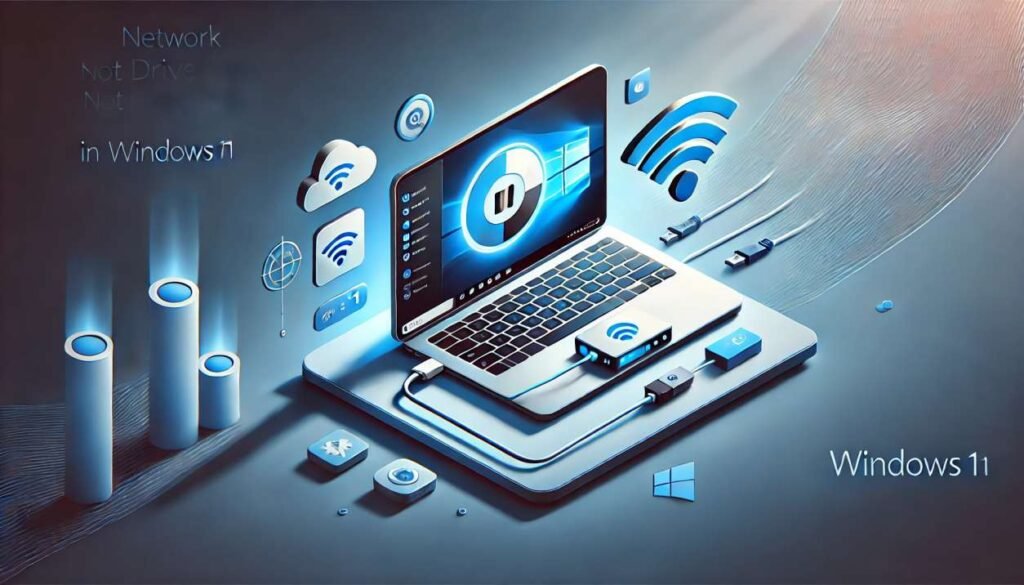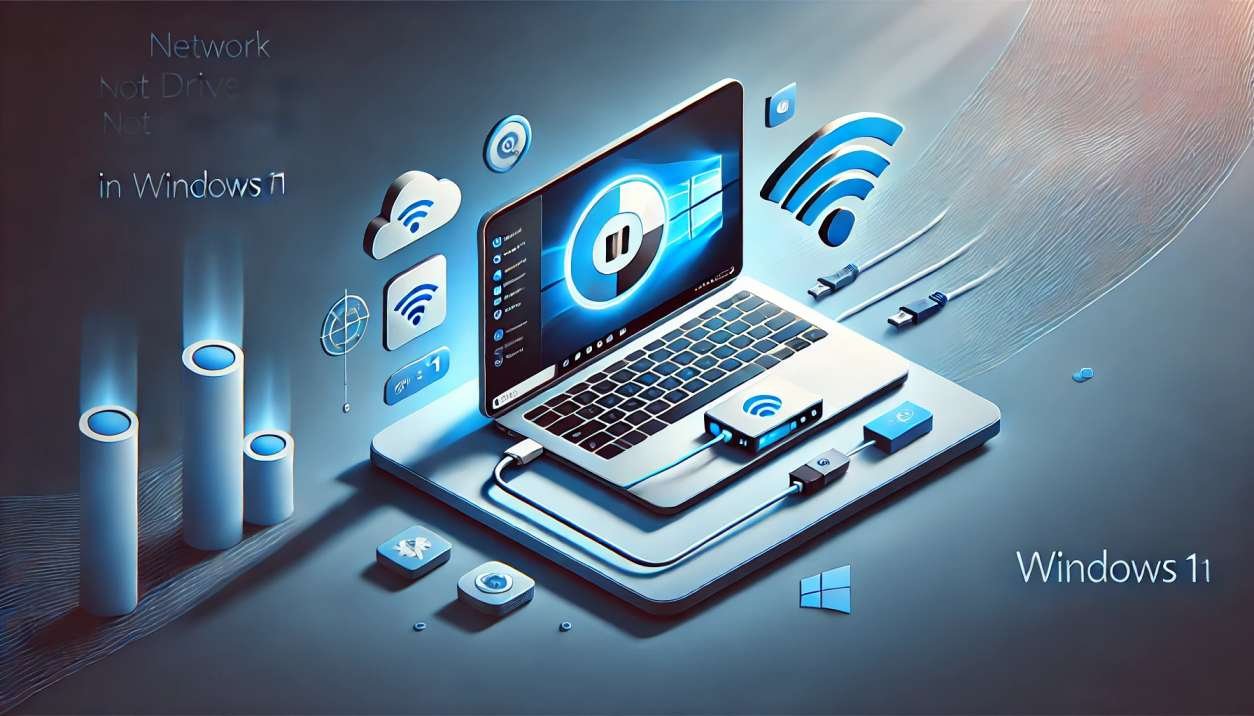If you’re having trouble connecting to network drives in Windows 11, you’re not alone. Many users experience issues with network drives failing to connect, whether it’s for work or home use. While this can be frustrating, there are a few simple steps you can follow to resolve it. In this guide, I’ll walk you through the potential causes and fixes for network drive connection issues on Windows 11.
Why Network Drives Fail to Connect
Before diving into solutions, it’s important to understand why this issue happens in the first place. There are several reasons why network drives might not connect, including:

- Incorrect network settings
- Outdated or misconfigured network adapter drivers
- Issues with sharing permissions
- Windows 11 security settings or network policies
Let’s jump into how you can fix it.
Step 1: Verify Network and Sharing Settings
The first step is to check if network sharing is properly configured on your system. Windows 11 may have security features or settings that prevent easy access to network drives.
Follow these steps:
- Open Control Panel: Press Windows + S and type Control Panel, then hit Enter.
- Network and Sharing Center: Click on Network and Sharing Center.
- Change Advanced Sharing Settings: On the left-hand side, click Change advanced sharing settings.
- Enable Network Discovery and File Sharing: Ensure that Turn on network discovery and Turn on file and printer sharing are selected. Save changes.
Now, try reconnecting to the network drive to see if the issue is resolved.
Step 2: Ensure Correct Credentials
Sometimes the issue is as simple as a wrong username or password. Windows 11 may fail to connect to a network drive if the stored credentials are incorrect.
Here’s how to check or update your credentials:
- Open Credential Manager: Press Windows + S, type Credential Manager, and select it.
- Windows Credentials: Click on Windows Credentials.
- Look for Network Drive Credentials: Find the saved credentials for the network drive in question. You can either edit the credentials or remove them and re-add them when reconnecting to the drive.
Step 3: Map the Network Drive Again
If your network drive fails to connect, it might help to remap the drive manually. This can often fix connectivity issues caused by broken or outdated mappings.
Here’s how to remap the network drive:
- Open File Explorer: Right-click on This PC and select Map network drive.
- Choose a Drive Letter: Select a drive letter that isn’t in use.
- Enter the Network Drive Path: Type the network location (e.g.,
\\server\folder). - Reconnect at Sign-In: Make sure to check Reconnect at sign-in if you want the drive to be accessible every time you log in.
- Click Finish: Windows will attempt to connect to the network drive. If prompted, enter the correct credentials.
Step 4: Disable SMBv1 (If Necessary)
Windows 11 no longer enables SMBv1 (Server Message Block version 1) by default due to security concerns. However, if you’re connecting to an older NAS (Network Attached Storage) or network drive, you may need to re-enable it.
How to enable or disable SMBv1:
- Press Windows + R: Type
optionalfeaturesand press Enter. - Windows Features: Scroll down to find SMB 1.0/CIFS File Sharing Support.
- Check the Box: Check the box to enable SMBv1 if you need it for older devices. Click OK and restart your PC.
If this works, you might want to look into upgrading your NAS or network storage to something that uses SMBv2 or higher for better security.
Step 5: Update Your Network Adapter Driver
Outdated or corrupted network adapter drivers can cause issues with network drive connections.
Here’s how to update your network adapter driver:
- Open Device Manager: Right-click on the Start menu and select Device Manager.
- Expand Network Adapters: Look for Network Adapters and expand the list.
- Update Driver: Right-click on your network adapter and select Update driver.
- Search Automatically: Choose Search automatically for updated driver software. Windows will look for the latest drivers online.
After the update, restart your computer and see if the network drive is now accessible.
Step 6: Adjust Group Policy Settings (For Pro Users)
For Windows 11 Pro or Enterprise users, there may be network-related policies preventing your connection to network drives. This solution is a bit more advanced, so proceed with caution.
To modify Group Policy settings:
- Press Windows + R: Type
gpedit.mscand hit Enter. - Navigate to Local Policies: Go to Computer Configuration > Administrative Templates > Network > Lanman Workstation.
- Enable Insecure Guest Logons: Double-click on Enable insecure guest logons and set it to Enabled.
This step will allow connections to older, less secure network devices. However, be cautious when enabling this for security reasons.
Step 7: Restart the Network List Service
Restarting the network services can resolve connectivity issues in some cases.
To restart the Network List service:
- Press Windows + R: Type
services.mscand hit Enter. - Scroll Down to Network List Service: Right-click and select Restart.
- Repeat for Other Services: Optionally, restart other related services like Workstation and Network Connections.
After restarting the services, try connecting to the network drive again.
Step 8: Check Firewall and Antivirus Settings
Sometimes, firewall or antivirus software can block network drive connections. Check the settings in your firewall or antivirus to make sure they aren’t preventing access.
Temporarily disable your antivirus/firewall:
- Open Security Software: Open the settings for your antivirus or firewall.
- Temporarily Disable: Look for the option to temporarily disable protection.
- Test the Connection: Try reconnecting to the network drive while the security software is disabled.
If the network drive connects, adjust the software’s settings to allow access without fully disabling it.
Final Thoughts
Network drive issues can be annoying, but they’re usually solvable with a few troubleshooting steps. From adjusting your sharing settings to remapping the drive, I’ve covered some of the most common fixes for network drive connectivity problems in Windows 11.
If none of these solutions work, there might be a deeper network configuration issue that needs further investigation. But in most cases, the steps above should get your network drives back online.
Feel free to drop a comment if you’re still having trouble, and I’ll be happy to help out.

